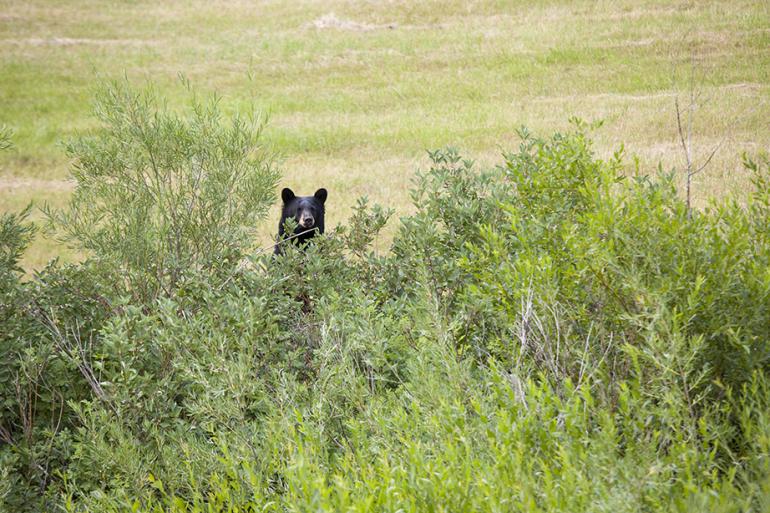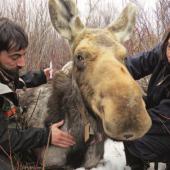The Black Bruin Awakes
Imitating bears, becoming possessed by their spirit, and sometimes even becoming a bear are all part of Native American Bear Dances. Bear Dances were performed for many reasons: for the Yocuts it was a harvest rite, the Pueblo danced to celebrate the winter solstice, the Delaware renewed the world and the cycle of seasons through this dance, the Lakota used the Bear Dance to heal the sick and injured, and the Assiniboin danced it in preparation for winter.
Other tribes, such as the Northern and Southern Utes (and eventually all Shoshonean-speaking tribes of the Great Basin) danced the mammaqunikap, or the Forward-Backward Dance, to welcome and honor bears as they emerged from their dens in the spring. This was the most important ritual of the year for the Utes. Just before the winter breakup of camp, the Utes danced the mammaqunikap to help hungry bears find food as they came out of hibernation. The Utes imitated thunder with rasps and resonators to wake the bears from their slumber and prayed the bears would aid them in finding meat and berries. The mammaqunikap was believed to help bring an end to winter and usher in the beginning of spring. In most cases Bear Dances were ways to embrace and honor the sacred and acknowledge the mysterious.
As the end of winter and the beginning of spring come to southwest Montana, we too can prepare for the reawakening of the black bear. Bears are common in the Gallatin National Forest, and although they don’t truly hibernate, bears sleep deeply on and off throughout the winter. By spring they are starving. These bears, adapted to life along the forest edge where food is most diverse, immediately begin searching for succulence in the roots of plants such as spring beauty and wild onion. They peel back the bark layers and feed on the cambial layer of young trees. Black bears chomp grouse whortleberry, rodents, winter-killed carcasses, insects, grasses, and anything else they can find. What looks like insouciance is actually broad foraging to obtain a varied diet.
During the fall and early winter, bears enter a stage of hyperphagia—a pre-denning period of gorging—to prepare them for the winter sleep. A female may give birth during the winter in a semiconscious state. Although black bears mate in the spring, the egg won’t implant until winter, and only if the bear is healthy. By mid-January, two to four blind, toothless, and almost hairless cubs are born. They’ll sleep and suckle for two months until it’s time for mom to awake and begin searching for food again.
It makes sense that Native Americans almost universally consider bears to have great spiritual power and believe bears to be symbols of nature. These creatures appear and disappear with the seasons and, even more than other mammals, seem to belong in the forests and meadows, belong to the forests and meadows. What passes as indiscriminate eating is a widespread adaptation to their world. They are such a part and parcel of their environment that they fit in anywhere.
The Inland Tlingit believe Bear Mother gave birth to all the animals that walk the earth. It was she who gave the animals the form they have today. It was she who nursed each one and rocked them in a hammock extended between four mountains. When the animals were ready to find their own way, it was she who taught them what foods to eat and how to get along with each other.
In many cultures bears are considered parts of society and intricate in maintaining the functions of the world; thus they are honored and revered. When you run into a bear this spring or summer feasting on its favorite foods or teaching its young the ways of the woods, thank it for ushering in the spring and renewing the world and the cycle of seasons.













